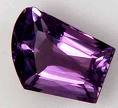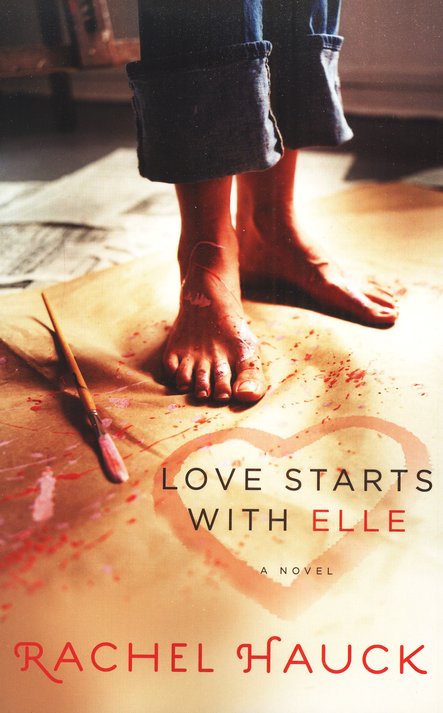|
 Most
of us know the amethyst
gemstone for its extravagant purple or violet color. It’s often
considered the stone of legends and royalty, even claiming miraculous
powers to prevent drunkenness or ward off snakebite. Most
of us know the amethyst
gemstone for its extravagant purple or violet color. It’s often
considered the stone of legends and royalty, even claiming miraculous
powers to prevent drunkenness or ward off snakebite.
But as a writer and reader,
purple brings to mind one thing: purple prose.
Show of hands if you’ve read a
book in which the writing and descriptions were so over the top you
wanted to either laugh or throw the book across the room.
In simple terms, we call it
overwriting. The author is trying too hard to convey an emotion and
borders on manipulating the reader.
But we’re too smart for them,
aren’t we?
Here’s a fun example of purple
prose. It’s from The Garden of Cyrus by Sir Thomas
Browne (1605–82), first published in 1658:
But the
Quincunx of Heaven runs low, and ’tis time to close the five ports of
knowledge. We are unwilling to spin out our awaking thoughts into the
phantasms of sleep, which often continueth precogitations; making
Cables of Cobwebs and Wildernesses of handsome Groves. Besides
Hippocrates hath spoke so little and the Oneirocriticall Masters have
left such frigid Interpretations from plants that there is little
encouragement to dream of Paradise itself. Nor will the sweetest
delight of Gardens afford much comfort in sleep; wherein the dullness
of that sense shakes hands with delectable odours; and though in the
Bed of Cleopatra, can hardly with any delight raise up the Ghost of a
Rose.
I stopped reading after
Quincunx of Heaven. The sentence is so long and awkward, it’s hard to
tell what Browne wanted to communicate. It has no story world, no
characterization. Whose point of view is it, anyway?
It’s tempting to think we
are reading a good book when the sentences are long and flowery or
stuffed with big words. But really, don’t we just want to escape into a
story and fall in love with the characters?
A few years ago, I was
reading an “acclaimed” author whose works were being added to
university reading lists. One sentence took me at least a minute to
read and reread. It was long and full of comma phrases. I said to my
husband, “No wonder kids hate literature.”
The amethyst stone is
simple, beautiful, and sought after, found in mines around the world
from southern Brazil to Madagascar to Canada. Sounds like a good novel,
doesn’t it? Takes us on a journey from South America to coast of Africa
back to North America. (Someone should make a movie . . .)
Purple prose doesn’t make a
book. Solid writing and storytelling makes a book.
These are passages from CBA
authors I’ve enjoyed reading.
Kate
tucked her clipboard in the crook of her elbow, took the steps down
Jetty Pavilion’s porch, and crossed the heel-sinking sand of the
Nantucket shoreline. Denise Hunter, The Convenient
Groom
Can you see Kate maneuvering
through the sand with a clipboard? I see her in a suit of some kind,
hair pulled back, all businesslike. That simple sentence put me right
into the story. Any more and I’d have quit reading, wondering what the
author was trying to pull.
|
Five
months ago I raised Gary
and Mary Andrews from the dead. Lisa Samson, Quaker
Summer
I’m
intrigued, drawn in and want
to find out more. This single sentence tells me an interesting story
follows. I want to know who, what, when, where, why, and how. Nothing
purple about this opening line.
If Kat
were hunting for the quintessential cowboy, with a lazy smile,
heavy-duty arms and a physique that could wrestle cattle, she had to
look no farther than Rafe Noble. Susan May Warren, Taming
Rafe
Okay, Kat and I have a lot in
common: What’s not to like about Rafe? Men want to be him. Women adore
him. In a straight forward description, we “see” the hero of the book.
During the brisk drive back to
Holly’s place, I dragged hard on an overdue cigarette while she stared
out her window at the bright landscape of dilapidated, one-story pawn
shops, low rent casinos and chintzy wedding chapels. Creston
Mapes, Nobody
I love this chapter beginning. I
picked it from the middle of the book but I know right where we are—Las
Vegas—and I have strong sense of what’s going on. No purple prose here.
I peer
around the manicured yards of the homes that line the streets, with
their freshly painted piazzas and polished brass door knockers and
plaques spelling out each home’s historical significance, and it seems
even the flower boxes are smirking at Mama and me. I hope she will drop
me off quickly so that none of my friends will see me in this junk
mobile. Beth Webb Hart, Grace at Low Tide
This paragraph paints a picture
of manicured lawns, historical homes. I relate to how DeVeaux is
feeling, juxtaposing the eloquence of the neighborhood with her mama’s
old beater.
I could go on with more authors,
as I’m sure you could, too. One of the things I really appreciate about
CBA publishers is their desire for excellence. The writing in this
industry is some of the best.
But back to purple and the
amethyst. Romance novels are often dinged for their flowery,
over-the-top writing, mostly in an effort to be sensual without being
pornographic. It’s made the romance genre both over-the-top popular and
over-the-top snubbed.
But like the amethyst, writers
and stories come from all over the world in various shades and
textures. The value is determined by demand and desire.
So is fiction. Make it your goal
this year to read lots of good books.

|









 Most
of us know the amethyst
gemstone for its extravagant purple or violet color. It’s often
considered the stone of legends and royalty, even claiming miraculous
powers to prevent drunkenness or ward off snakebite.
Most
of us know the amethyst
gemstone for its extravagant purple or violet color. It’s often
considered the stone of legends and royalty, even claiming miraculous
powers to prevent drunkenness or ward off snakebite. 